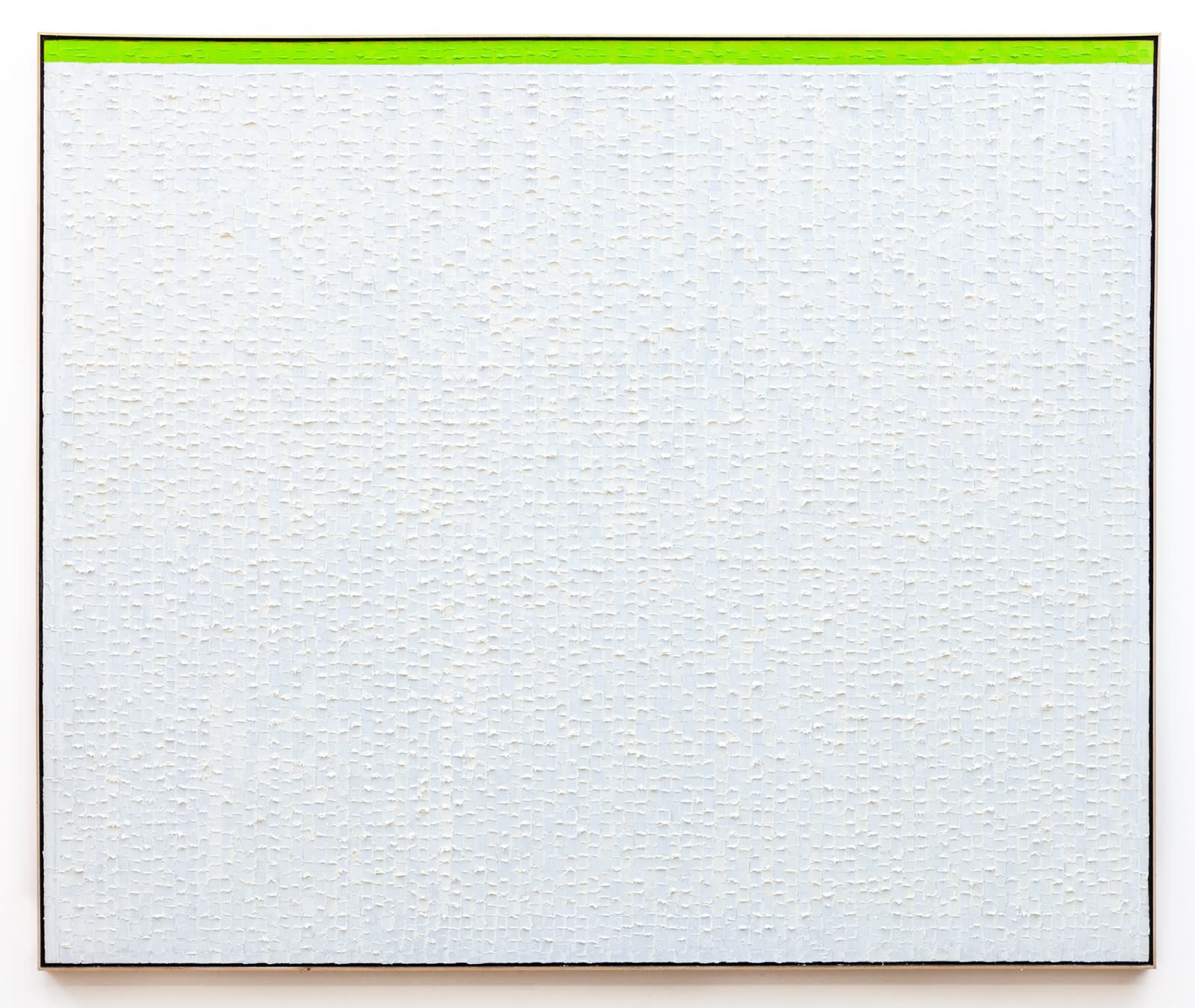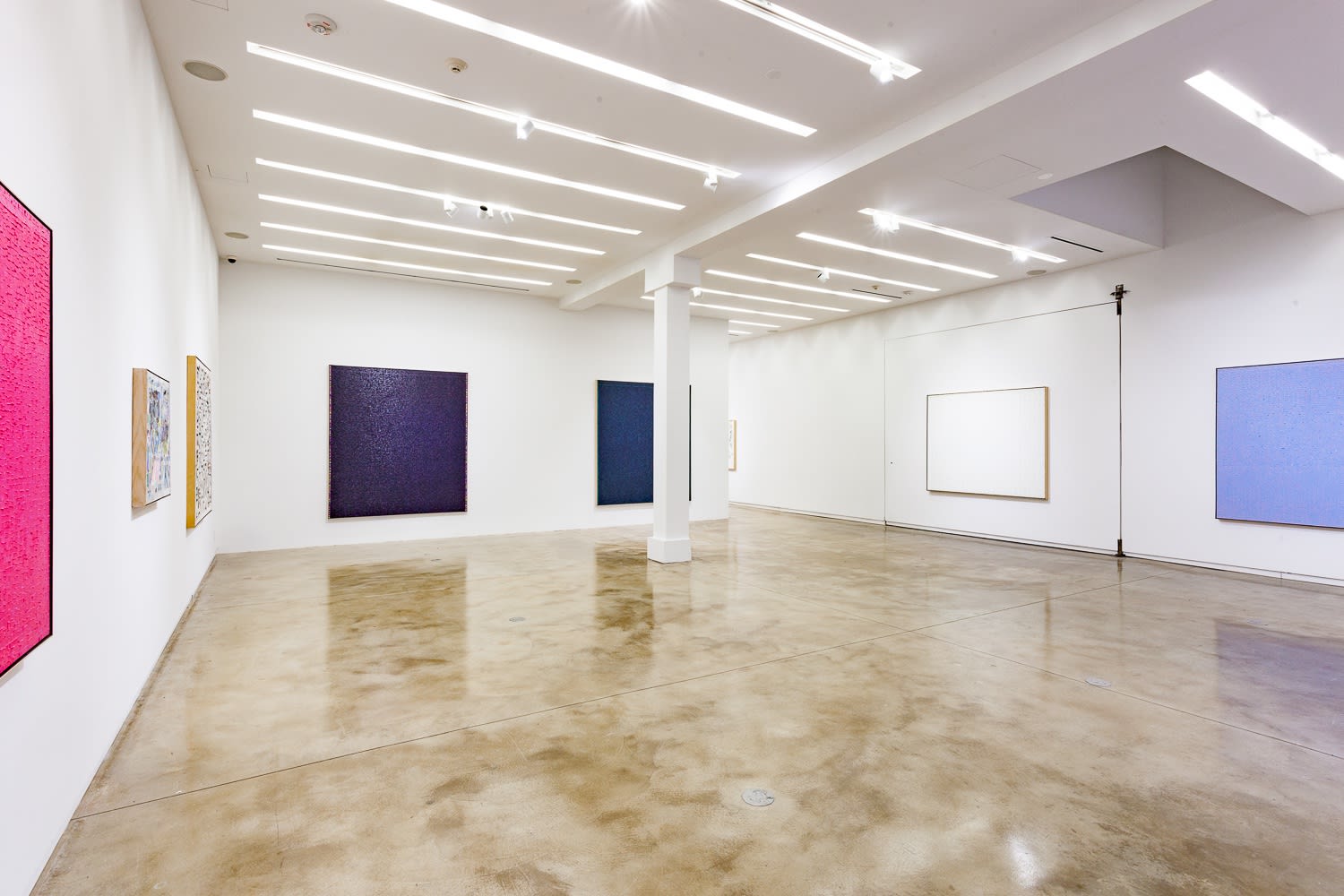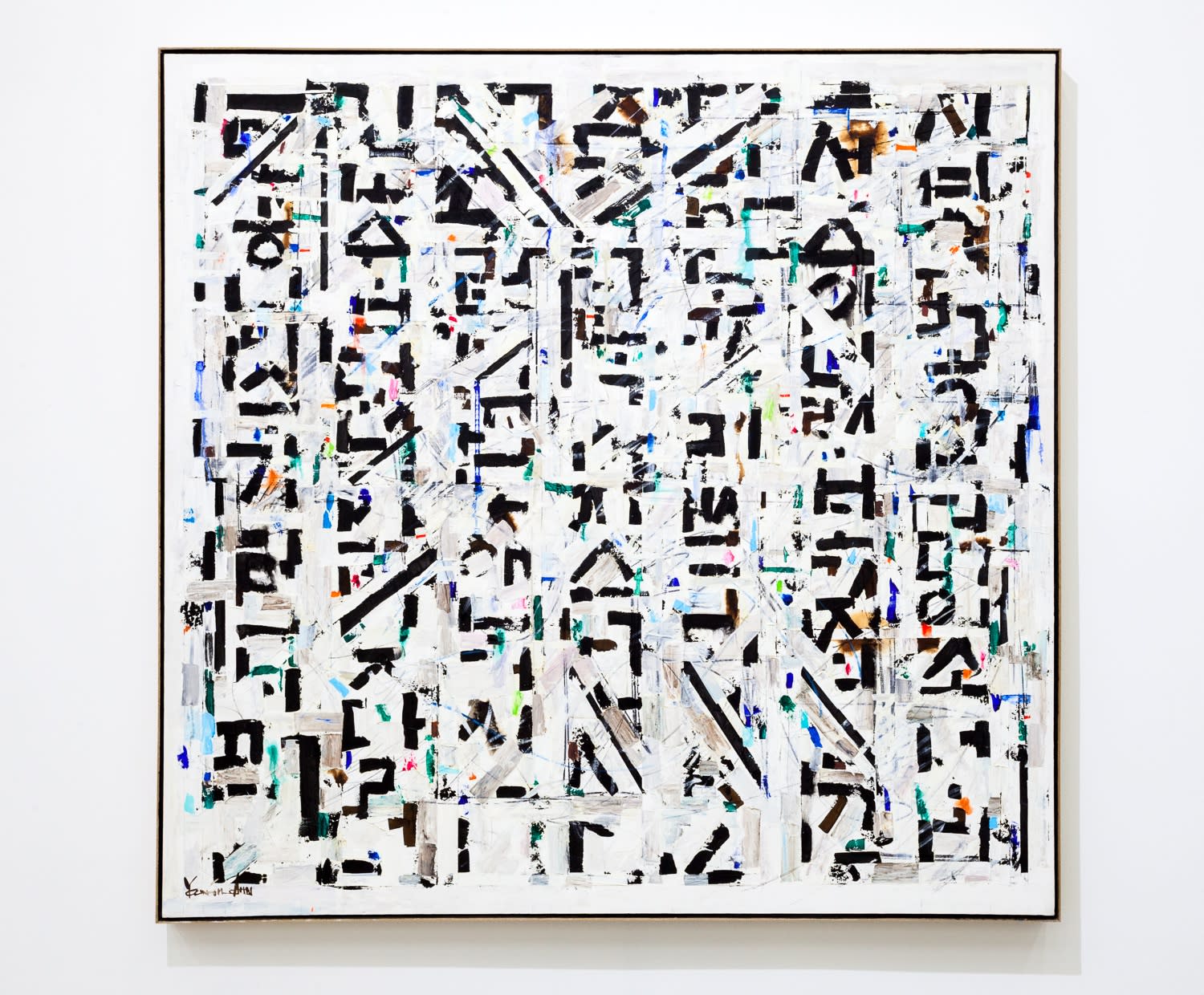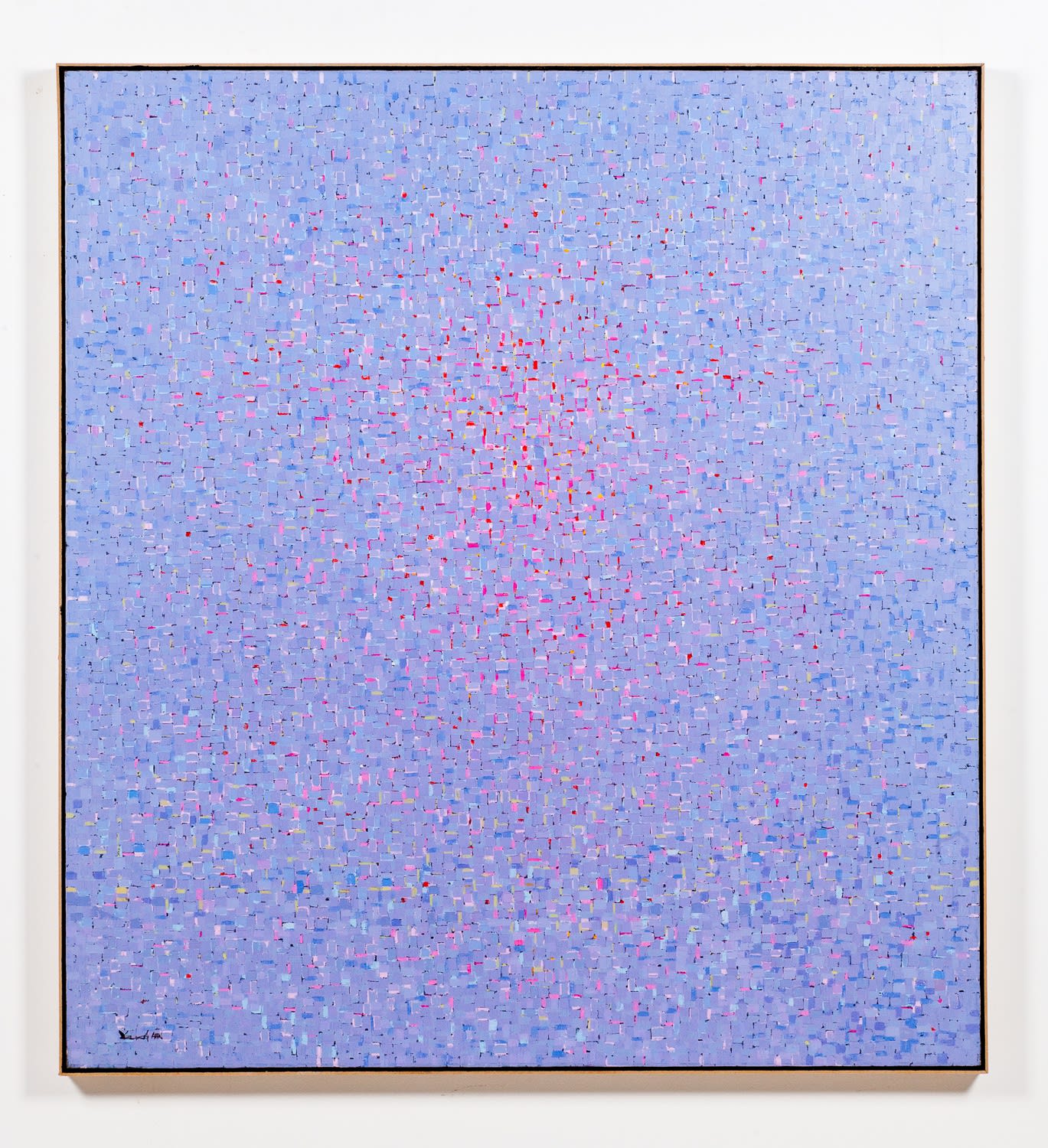Young-Il Ahn, Water AHSW 19, 2016, Oil on canvas, 60 x 72 x 2 in.
Young-Il Ahn, the pioneering Korean-American painter who channeled a harrowing experience at sea into entrancing, atmospheric canvases, died this past weekend in Los Angeles, according to his Chicago gallery, Kavi Gupta. He was 86.
Over the course of more than 60 years, Ahn pursed a range of intricate abstract styles, with his meticulous, deliberate marks sometimes sharing space with dashes of legible imagery, like birds, musicians, and landscapes.
But it was Ahn's beguiling "Water" series, which he developed in the latter part of his career, that secured his place in recent art history. Using a knife to apply repeating blocks of oil paint atop fields of color, he created meditative pictures in which light shimmers and space is in flux. Tiny magenta rectangles dance atop sky blue, or jet-black ones struggle to contain a deep lilac, with minute daubs of other colors enlivening the scene in some cases.
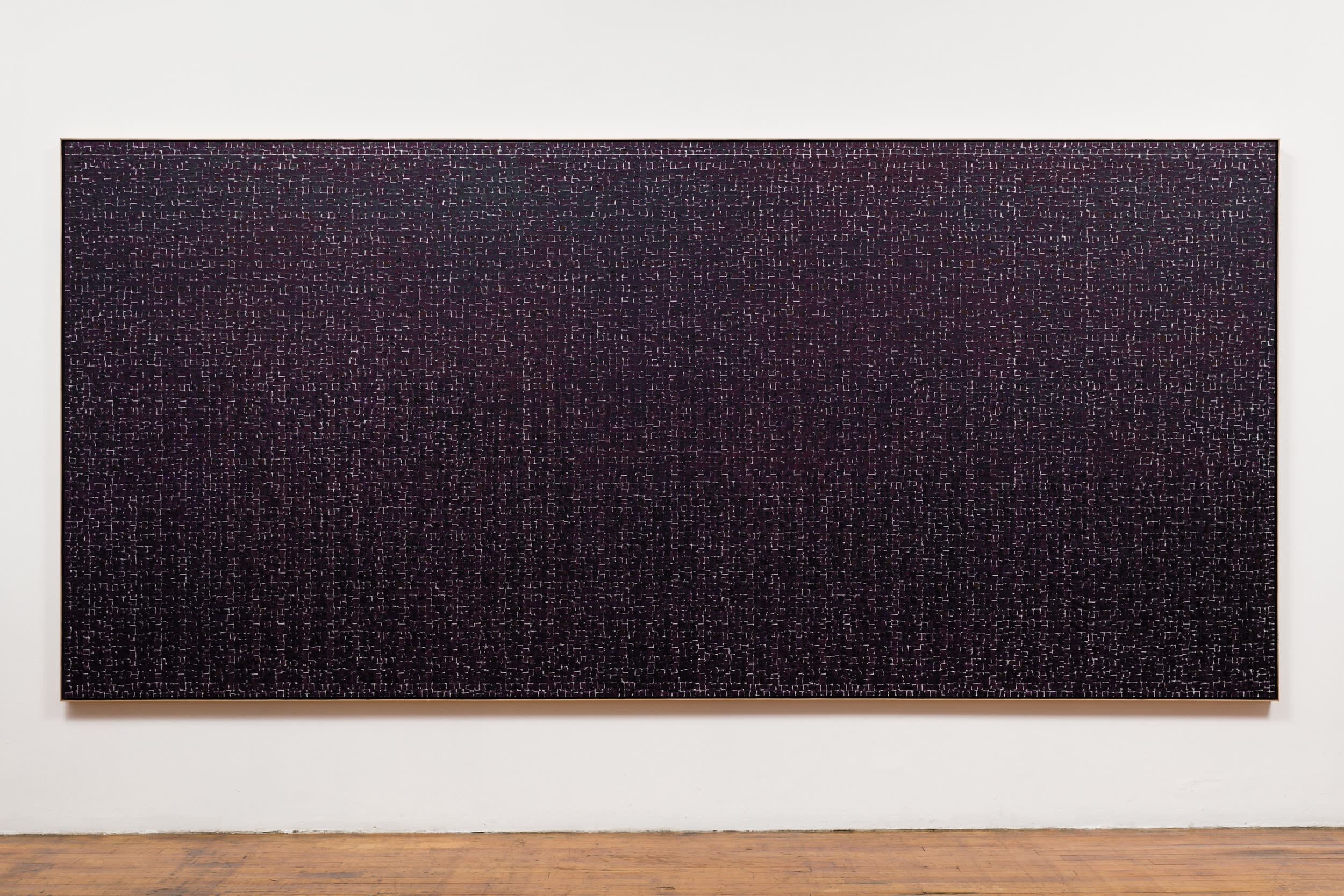
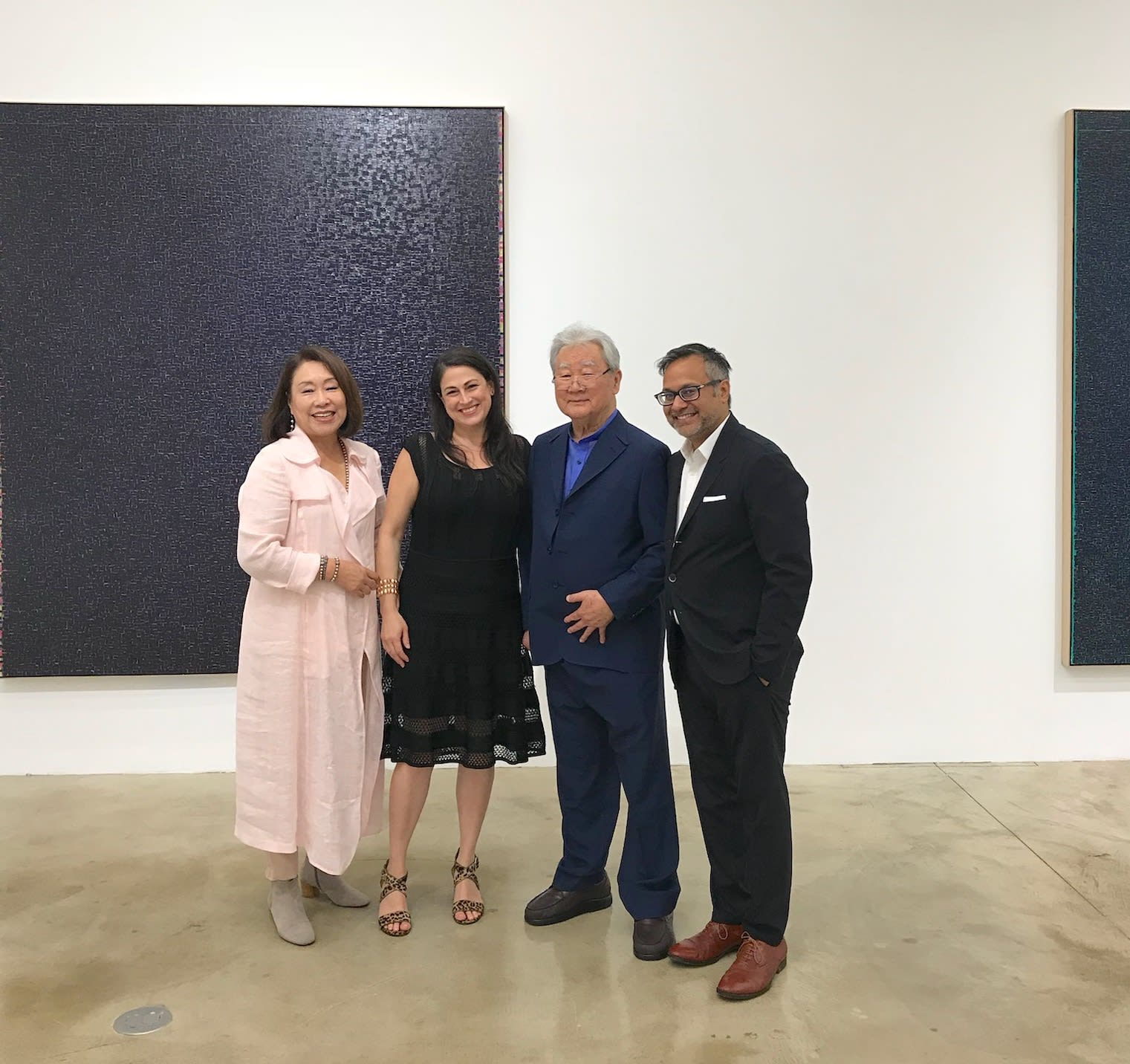
Young-Il Ahn with, left to right, Soraya Ahn, Jessica Moss, and Kavi Gupta at the opening of Young-Il Ahn's solo show at Kavi Gupta in 2018.
Installation View, Young-Il Ahn, 2018, Kavi Gupta | 219 N. Elizabeth st.
The “Water” works resulted from a traumatic incident—and an epiphany. While sailing a fishing boat off the coast of L.A. in 1983, Ahn found himself caught in a fog, unable to see even his hands. With his engine off, he drifted for hours, until the world finally became visible again. He sought to capture that sublime moment of clarity in his art.
After that, “painting the ocean became a kind of meditation for me, a conversation within myself extended to part of the universe,” Ahn once wrote.
“He told me he saw, at that moment, everything that he was looking for his entire life,” his second wife, Soraya Ahn, told Yonhap News in 2017. That year, the Los Angeles County Museum of Art staged a solo exhibition with Ahn that featured his “Water” pieces. It was the first-ever one-person show there by a Korean American artist.
Young-Il Ahn, Self-Reflection 1, 2000, Oil on canvas, 62 x 60 x 2 in.
Young-Il Ahn was born in the city of Gaeseong, which is now part of North Korea. His parents were artists—his father a painter and his mother a musician. They moved to Tokyo early in his life, where he had a show of his paintings at the age of 6, and they moved back to Korea in the mid-1940s. He graduated from Seoul National University in 1958 and found success in the city’s art market.
In 1966, seeking a wider audience for his practice, Ahn decamped for the United States, and after stays in Hawaii and New York, settled in Southern California, which would be his home for the rest of his life. There, too, his paintings quickly found buyers, enabling him to bring his then-wife and three daughters to the U.S., as Victoria Kim recounted in a 2017 profile of the artist in the Los Angeles Times. However, a legal tangle between his dealer and a benefactor led him to stop exhibiting between 1971 and 1982.
Beyond the “Water” series, which can bring to mind the luminosity of Alma Thomas and the hard-won grids of Chung Sang-Hwa, Ahn created gestural paintings that harbor traces of human faces or fractured bits of Hangul, or that even evince explosive sunsets or fireworks.
Young-Il Ahn, Water SM187, 1987, Oil on canvas, 60 x 55 x 2 in.
Ahn was the subject of two solo shows, in 2015 and 2017, at the Long Beach Museum of Art in California, which holds his work, as does LACMA and the National Museum of Modern and Contemporary Art in South Korea. Despite a stroke in 2013 that limited his movements, he continued working during his late-career renaissance.
Besides being a painter, Ahn was an accomplished musician, adept at piano, clarinet, and cello.
“Music helps me paint,” he told Yonhap in 2017. “I create beats and variations, like in a score. People might think that it would be simple to do that, but actually I put all my energy into every touch I do until it is filled with power.”

